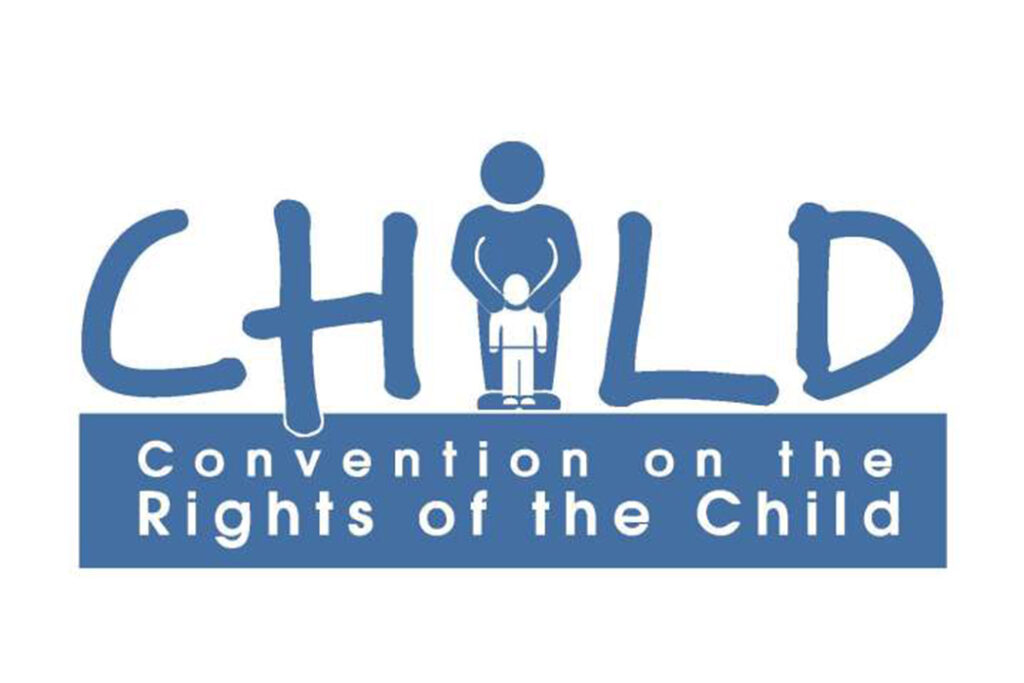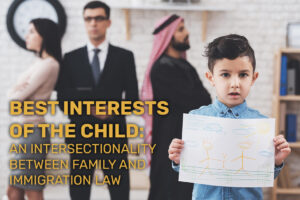FAMILY LAW
Julia Munk: Helping You Understand the Law
Julia Munk actively seeks to change the world by helping each of her clients understand their legal rights and the process they are apart of.
If you come away understanding the legal picture a little bit better, she has succeeded.
“When I was in the fifth grade my teacher asked us to draw pictures of what we wanted to be when we grew up. My best friend drew a teacher and the boy next to me drew a firefighter. I drew a stick figure holding up a sign on a stick and wrote across the top of my page, “When I grow up, I want to be a protester.”
My teacher asked my why I wanted to be a protester and without a second thought I responded, “So that I can change the world.”
– Julia Munk of Munk Law
A Change in Direction
Julia Munk originally intended on becoming a disability studies professor. She did her undergraduate degree at the University of Toronto studying political science and equity studies. This was followed by a Masters at University of Victoria where she studied Studies in Policy and Practice and Social Services. Julia was ready to graduate and continue on a professorship career path when a situation developed in her personal life that changed everything. Julia suddenly became intimately familiar with parental rights and this led her to re-examine her career trajectory. She decided that her original plan did not line up with her shifting priorities. She concluded, “I realized I wanted a career where I’m not just writing about social justice in theory, but I’m actually able to do things for people in practice that will help their lives.” She decided to pursue a career in law.
Joining the Legal Community
After graduating from Osgoode Law School in Toronto in 2016, she considered the several options available to a newly-minted lawyer. The most attractive was becoming a sole practitioner. And Julia knew exactly the kind of law she wanted to practice and the types of clients she wanted to represent. Of course, Julia is glad to represent anyone who seeks her services, but she’s especially passionate about reaching the people who believe legal representation is beyond them, inaccessible physically, financially, or socially.
Being a sole practitioner can be lonely, so Julia began looking for ways to plug into the legal community. She heard about the law chambers concept and immediately loved the idea. A law chambers would connect her to the legal community and put her in direct contact with other lawyers. It would give her everything she was looking for: allow her to run her own practice but not feel like she was all by herself. Julia saw an ad on LinkedIn for Wolf Law Chambers and went for a meeting to learn more about the chambers concept. The price was right and provided a professional environment to work in and to meet clients. It was important to her to have an office space that reflected the professionalism with which she approaches her career. Wolf Law Chambers stood well above rivalling office options available to her as a new law practitioner. Everybody was friendly. At the end of her visit, she thought, “This place is up-and-coming,” And then, “I’m up-and-coming too.” So she signed up for a virtual office.
It’s proven to be a good decision. Julia has found that being part of Wolf Law Chambers reminds her that she’s not that different from other lawyers. “Sometimes I think when you’re working all by yourself you feel like you are,” she said. She loves being around other professionals who think law is as exciting as she does. She was also immediately connected to another lawyer who consulted with her on her specialty. The benefits of Wolf Law Chambers’s referral network were immediate.
Her Practice
Julia tries to make her practice as client-based as possible. “I’m trying to increase access to justice to the best of my ability to clients who would otherwise not be able to access legal services.” Family law, estates issues, and human rights are the three main prongs of her practice. Within estates, she enjoys doing something for families because it’s also connected to disability and capacity issues as well as protecting people’s rights as they get older. Disability law and elder law have a lot of overlap which intrigues her. Within family law, her scope ranges from child protection to representing parents with disabilities and the unique challenges they face. Julia practices all types of family law and has a special affinity for helping non-traditional families navigate the system. Under the umbrella of human rights, Julia will focus on education law, family law and rights in employment. She also acts as a consultant for other lawyers, educating and enabling them to interact and represent their disabled clients effectively. In the end, every case Julia takes on is done so with the goal to increase access to justice.
Philosophy
Julia believes a lawyer should be accessible, diligent and caring. She strives to be client-focused, empathetic towards her clients’ experiences, and takes time to explain the intricacies of the law to each one. She wants to help people who otherwise wouldn’t utilize legal services. “It’s not about disability or incapacity… Law plays a role in everyday life and I want it to be accessible to everyone.” Not just people who understand it, not just people who have the means, but also for the busy mom who needs legal advice, or the individual who has a tight budget. Julia likes helping people understand the processes of law and the documents they are required to sign.
Julia wants to incorporate inclusive design principles into her practice. This means creating a legal service that is inclusive of all people. In the future, Julia envisions creating a practice for lawyers that accommodates specialties of all kinds and draws lawyers from diverse backgrounds who reflect their communities. Julia has learned that her experience, her background and who she is lends her a unique perspective to issues that others may not have thought of. It still surprises her the way her insights sometimes light up another lawyer’s eyes giving them a new avenue of possibility to explore in a given case. “It’s one of my favorite parts, the idea that I can bring a new idea to the table,” she said.
In the End
There’s law in everyday life and Julia doesn’t want it to be just about ability or disability, that’s not the distinction that she feels should be focused on. She wants it to be about what law can do to improve and change the world. “I still want to be a protester,” she said, “but I’m trying to find practical ways of achieving that.” If just one person understands their employment contract a little bit better or understands their rights a bit better after working with her, she has succeeded.
If you have previously considered legal service just out of reach, Julia is here to guide you through the complexities of the legal system with care and compassion.
Best Interests of the Child: An Intersectionality Between Family and Immigration Law
Article 3.1 of the United Nations Human Rights (UNHR) Convention on the Rights of the Child (CRC) states the following:
In all actions concerning children, whether undertaken by public or private social welfare institutions, courts of law, administrative authorities or legislative bodies, the best interests of the child shall be a primary consideration [1].
The Convention on the Rights of the Child is the most widely ratified treaty in human history with 194 countries abiding by it [2]. It is internationally observed and accepted, while it’s application and practice is a topic for another day. In understanding who is protected under the CRC, we must define what it means to be a child.

According to the United Nations a child is,
…every human being below the age of eighteen years unless under the law applicable to the child, majority is attained earlier [1].
Now, it is quite important to asses the relevance of these international statutes in relation to Human Rights within Canada. To put into perspective the importance of human rights in Canada, we must understand that human rights are protected federally and provincially. The human rights laws in Canada stem from the Universal Declaration of Human Rights (UDHR). In fact, Canadian lawyer and scholar, John Humphrey, played an integral role in the drafting of the UDHR in 1948 as well [3]. Globally, many countries have applied the declaration and its contents to bolster their own national legislations and to act in accordance with the statutes outlined within international human rights laws. In Canada, human rights are entrenched in the Constitution of this very nation, most notably in the Canadian Charter of Rights and Freedoms but they have an overlapping relevance in other areas of law as well. Family and immigration law within Canada places great importance on the best interests of the child, drawing from the Convention on the Rights of the Child. This principal governs decisions and judgements within family and immigration matters, that of which involve children [4]. It is truly a point of intersection across both fields of law and legislation.
The Canadian Bar Association brilliantly outlines the best interests of the child and the three fold concept that entails it.

They use the following general commentary from the Convention on the Rights of the Child to elaborate on their viewpoints about the best interests of the child:
A substantive right – a primary consideration in actions concerning the child due to the child’s dependency, maturity, legal status and often “voicelessness”;
An interpretive principle – if a legal provision is open to more than one interpretation, the interpretation which most effectively serves the child’s best interests should be chosen;
A rule of procedure – legal representation, timely decisions, reasons for how a decision was reached, how factors were weighed, and how the child’s views were considered. [4]

In other words, children have a legal entitlement that ensures those decisions which concern them are carried out with their best interests as a primary consideration. Next, for legislation that is open to interpretation, interpretations serving the best interest of the child should be chosen [4]. The final component involves procedural considerations for the best interests of the child. Whether it is substantively or procedurally, the best interests of the child are to be weighed and considered first and foremost. With this three-fold concept underlying the concepts and legislation set forth by the CRC, let’s examine how it has played an effective role in Canadian law.
In determining child access and custody in the province of Saskatchewan, section 8 of the Children’s Law Act outlines the necessary conditions to be met when making a decision about ordering custody of a child. Subsequently, they note considerations that are to be weighed in granting custody of the child as well. These include, but are not limited to, the capacity of the person seeking custody of the child, the child’s wishes, the quality of the relationship between the person seeking custody and the child themselves, the physiological, emotional, psychological, social, and economic needs of the child [5].
Additionally, section 24 of the Children’s Law Reform Act of Ontario determines the merits for application of custody or access for a child [6]. This statute places immense importance on the best interests of the child, with special consideration of the child’s needs and circumstances. Some of these needs and circumstances include the plan proposed by the person(s) applying for access of custody of the child, the child’s views and preferences, the stability of the family unit in which the child will potentially settle, to name a few [6]. The Revised Statutes of Ontario also outline the procedural practices in place by the court in issuing orders for the custody and access of a child [7].
Federally, the Divorce Act, examines the best interests of the child in carrying out orders for custody of a child [8].
Under section 16, subsection 8, it states,
In making an order under this section, the court shall take into consideration only the best interests of the child of the marriage as determined by reference to the condition, means, needs and other circumstances of the child [8].

It is quite apparent that federally and provincially the underlying principles governing child custody and access in family law clearly place a high degree of significance on the best interests of the child. The priority placed upon the needs and the circumstances of children is not just limited to the area of family law. It also constitutes the legislation surrounding immigration in Canada involving children. In exploring the application of the best interests of the child within Canadian immigration law, let’s take a look at the Immigration and Refugee Protection Act. Pursuant to the act, those normally not able to seek permanent residency in Canada, are able to apply under humanitarian and compassionate grounds in special circumstances [9]. The humanitarian and compassionate grounds assessment weighs the best interests of the child highly and its jurisdiction is within Canada and overseas [9]. Generally, the child’s physical, emotional, social, and cultural welfare are factored in when assessing a humanitarian and compassionate grounds application [9]. The factors considered include, the level of dependency between the child and the H&C applicant, the child’s link to the country in relation to which the application is considered, the impact of returning to their home country, the medical needs of the child, the impact on the child’s education and growth, etc. [9]

Immigration can involve the detainment and release of individuals depending on the context of their specific case.
Under Division 6, section 60 of the Immigration and Refugee Protection Act, states the following:
For the purposes of this Division, it is affirmed as a principle that a minor child shall be detained only as a measure of last resort, taking into account the other applicable grounds and criteria including the best interests of the child [10].
The Immigration Appeal Division does not overlook the importance that is to be placed upon the safety and best interests of the child. It is affirmatively understood from this statute that detaining a minor is the absolute last resort and does not serve in the best interest of the child [10].
Moreover, the right to appeal immigration decisions under the Immigration Appeal Division has procedural laws in place that administer how the government will proceed in detention and release of immigrants/refugees [10].
Section 68, subsection 1, states the following in regard to a removal order being stayed:
To stay a removal order, the Immigration Appeal Division must be satisfied, taking into account the best interests of a child directly affected by the decision, that sufficient humanitarian and compassionate considerations warrant special relief in light of all the circumstances of the case [10].
In the case of a removal order being stayed, the best interest of the child is again given the utmost priority if a child is directly involved. The statute aims to heavily consider humanitarian and compassionate grounds when ordering a stay for a child [10]. This leads one to believe that Immigration Canada carefully formulates a decision oriented in the best interests of the child.

A famous Canadian immigration case based upon H&C grounds is that of Baker v. Canada. An illegal immigrant in Canada for 11 years at the time, on the verge of being deported, filed an application for permanent residency [11]. Her application was rejected and when she filed with the Federal Court, they deemed that it was not necessary to evaluate her application in light of the best interests of her children. On appeal, the Supreme Court of Canada reversed this decision. They held that the human rights of Baker’s children should be considered and that decision makers of this case should abide by the values in international human rights law, specifically the Convention on the Rights of the Child [11]. Overall, it was established that an immigration decision made on H&C grounds would be arbitrary if an analysis of the best interests of the child was not implemented [11].
Closing thoughts
Stemming from international human rights law, the best interest of the child is a principle vested in Canadian family and immigration law involving children. It is undeniably an overlap between the two areas of law and the general guidelines are quite the same. In all actions concerning children, the primary consideration is the best interest of the child. In Canada, both federally and provincially, substantive and procedural law illustrate how the best interest of the child is a fundamental standard in decision making for family and immigration matters regarding children.
[1] Convention on the Rights of the Child, 2 November 1989, UNTS, Part I, Article 1(3) (entered into force 2 September 1990)[2] Human Rights Watch, “25th Anniversary of the Convention on the Rights of the Child” (17 November 2014), online (blog): Human Rights Watch <https://www.hrw.org/news/2014/11/17/25th-anniversary-convention-rights-child>
[3] Canada, Canadian human rights commission, Human Rights in Canada, < https://www.chrc-ccdp.gc.ca/eng/content/human-rights-in-canada> accessed 12 September 2019. [4] The Canadian Bar Association, BEST INTERESTS OF THE CHILD, http://www.cba.org/Publications-Resources/Practice-Tools/Child-Rights-Toolkit/theChild/Best-Interests-of-the-Child accessed 12 September 2019. [5] s. 8, Children’s Law Act, 1997, S.S. 1997, c. C-8.2 [6] s. 24, Children’s Law Reform Act, S.S. 1990, C-2 [7] s. 28, Children’s Law Reform Act, S.S. 1990, C-1 [8] Divorce Act, R.S.C., 1985, c. 3 (2nd Supp.), ss. 16(8), 17 [9] S.C. 2001, c. 27 – ss. 25(1), 25.1, 28(2)(c) [10] S.C. 2001, s. 60, 67(1)(c), 68(1) [11] [1999] 2 S.C.R. 817

